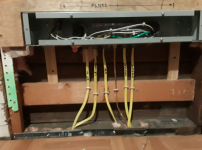HARTWELL, F.: This proposal should have been accepted. In spite of this
being one of the most surprisingly controversial, passionately debated, and
exhaustively studied topics in the history of CMP 9, there is a problem with the
wording that the proposal corrects. This exception has a long, tortured history,
and unfortunately only two members of the panel present for the discussion of
this exception (Hartwell and Sengupta) in the 1993, 1996 and 1999 cycles
remain at this time, and the lack of that shared experience influenced the final
panel action. This exception began with Proposal 9-69 in the 1993 cycle
followed by 19 public comments, which resulted in a special task group being
created to produce acceptable text for the 1996 cycle. The task group (chaired
by this member) gave the issue exhaustive study, including the 21 proposals for
the 1996 NEC submitted by the public on the topic, and reported what became
Proposal 9-66a from the panel. This was followed by 10 public comments,
which resulted in the proposal remaining accepted by show of hands on a vote
of 11 to 2 at the meeting. However two votes changed during recirculation, one
by facsimile with only 30 seconds remaining. The final vote of 7-4 was one
short of the required two-thirds, and so we moved on to the 1999 cycle, Finally
after merely two proposals and six public comments (bringing the total number
of panel actions on this topic to 60) the final language entered the NEC at last.
The record shows that CMP 9 was properly concerned with the integrity of
large numbers of cable assemblies pulled into a common sleeve, along with
mutual conductor heating. This is why the informational note says what it says,
and why paragraph “(g)” is included. At the meeting the current CMP 9 chair, a
veteran of CMP 8, correctly pointed out that a sleeve that is purely for
mechanical protection for one or two cables can be filled without regard for
raceway fill. This application is somewhat different. This is a method of
bringing large numbers of cables into a cabinet through a common raceway,
generally for aesthetic purposes. It has been done for generations in numerous
jurisdictions. If the raceway is short enough to qualify as a nipple, then mutual
conductor heating derating penalties do not apply. This is the customary case,
as in an instance where a panelboard is surface mounted below a suspended
ceiling in a commercial occupancy. CMP 9 imposed the 18-inch minimum
length to assure that a fault in the cabinet would be contained, along with many
other provisos to cobble together the required panel majority, each one fought
out during protracted discussion. We overlooked, however (and no member of
the public raised the question until this cycle) that Note 2 could be
misinterpreted to countermand the intended application of the factors covered
in the informational note. The panel statement does not respond to the merits of
the proposal, which should be accepted in some form.


